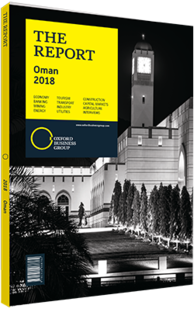Abdulaziz Mohammed Al Balushi, Group CEO, Ominvest: Interview

Interview: Abdulaziz Mohammed Al Balushi
How have credit ratings affected the sultanate’s ability to finance its budget deficits?
ABDULAZIZ MOHAMMED AL BALUSHI: Despite its weakening fiscal position and rating downgrades, Oman has been able to secure funding at attractive terms primarily because of its low debt-to-GDP ratio of 29%, political stability, strong economic ties to GCC countries and plans on economic diversification away from oil. Another main reason for Oman to be able to tap global bond markets is low global interest rates.. The yield on ten-year US treasuries is currently at 2.26%, which is not much more than inflation in the US. Central banks in Europe and the US have kept rates low and are avoiding increases for now.
In this context, global bond investors’ appetite for yield on riskier sovereign bonds has grown. Countries hit hard by low oil prices, such as those in the GCC, have been key beneficiaries of this trend. When Oman approached the international market in March 2017 to issue a three-tranche $5bn bond at five-, 10- and 30-year maturities, it was oversubscribed by four times. While bond interest rates surpassed those of other GCC countries (3.9% on five years, 5.4% on 10 years and 6.5% on 30 years), it was still attractive considering the economic situation and credit rating downgrades.
Therefore, despite downgrades, Oman has been able to finance its budget deficits largely through international bonds and borrowings. In 2016 it borrowed OR4bn ($10.4bn), which funded 90% of the budget deficit of OR5bn ($13bn). In 2017 Oman issued $7bn worth of both conventional bonds and sukuk (Islamic bonds) on the international market, which are expected to fund 90% of 2017’s OR3bn ($7.8bn) deficit.
How much of its financing needs can the country obtain from sukuk in the short to medium term?
AL BALUSHI: The recent debut sovereign sukuk issuances in the local and foreign markets were a step towards developing the sultanate’s Islamic finance industry and setting a benchmark for future issuances. The strong demand from local and foreign investors underpins the attractiveness of sukuk as an alternative to conventional bonds and gave the government a brand new channel through which to raise money.
Of Oman’s $7bn international debt issuances in 2017, $2bn, or 29%, has been from sukuk, while the remainder has come from conventional bonds. More issues by the government will help develop the secondary market for sukuk and give further investment options to local Islamic institutions. This will also help fund the budget deficit. With global interest rates still at low levels, Oman’s government is now able to tap the global sukuk markets at favourable rates and secure funding to bridge expected deficits over the next two years.
What steps would be necessary to successfully privatise some state-owned companies?
AL BALUSHI: As Oman looks to diversify the sultanate’s economy and raise money amid lower crude oil prices, the government is considering options for the privatisation of state-owned companies. However, the state’s privatisation plans through initial public offerings and secondary listings have been delayed because of unfavourable market conditions. These include adverse market sentiment, a decline in liquidity and low valuations. Oman is also studying options for privatising parts of its state-owned energy infrastructure, for example, by selling off some downstream assets, such as Salalah Methanol Company. However, the sultanate is not considering selling its upstream assets.
When well executed, privatisation can bring economic growth, higher employment and improved fiscal balance. Oman needs clear plans for privatisation, like alleviating the debt burden by using proceeds to improve fiscal balance; increasing efficiency, productivity and competitiveness of government-owned enterprises; and stimulating private savings, while directing them towards long-term investments to strengthen the local capital market and the economy as a whole.
You have reached the limit of premium articles you can view for free.
Choose from the options below to purchase print or digital editions of our Reports. You can also purchase a website subscription giving you unlimited access to all of our Reports online for 12 months.
If you have already purchased this Report or have a website subscription, please login to continue.

